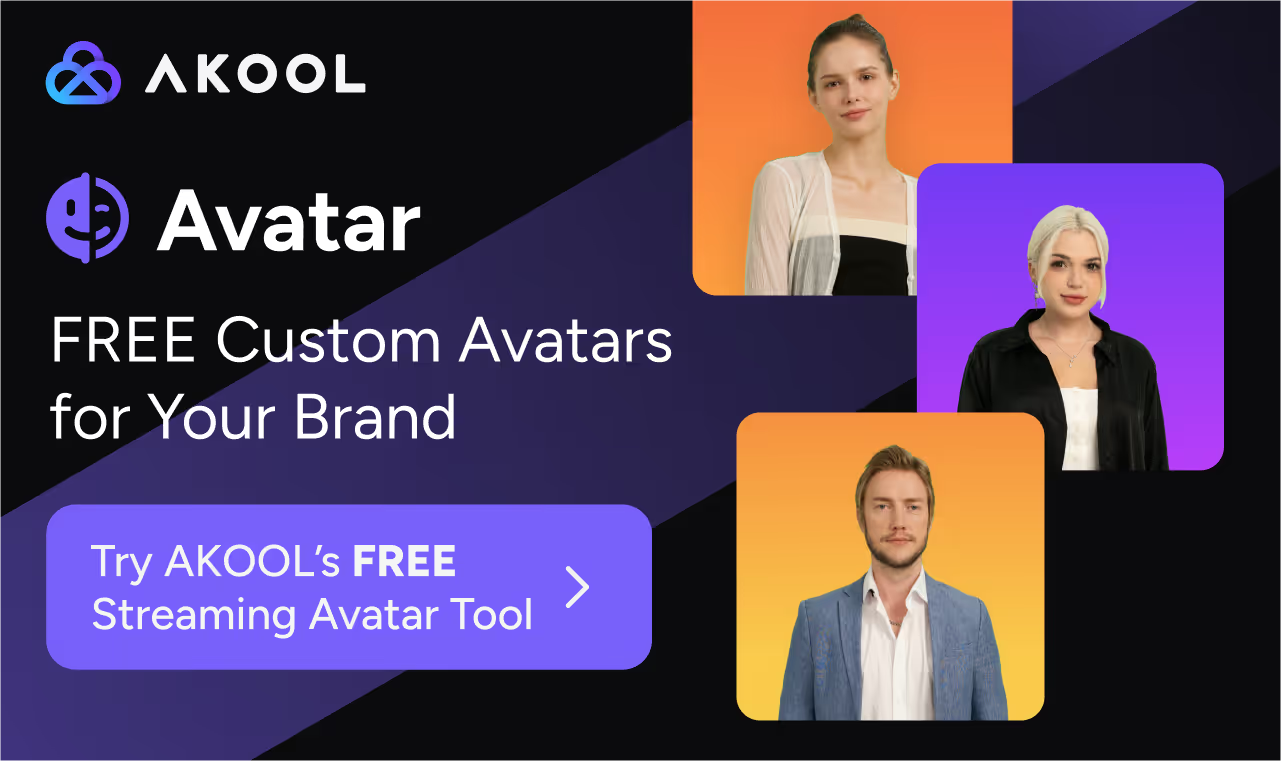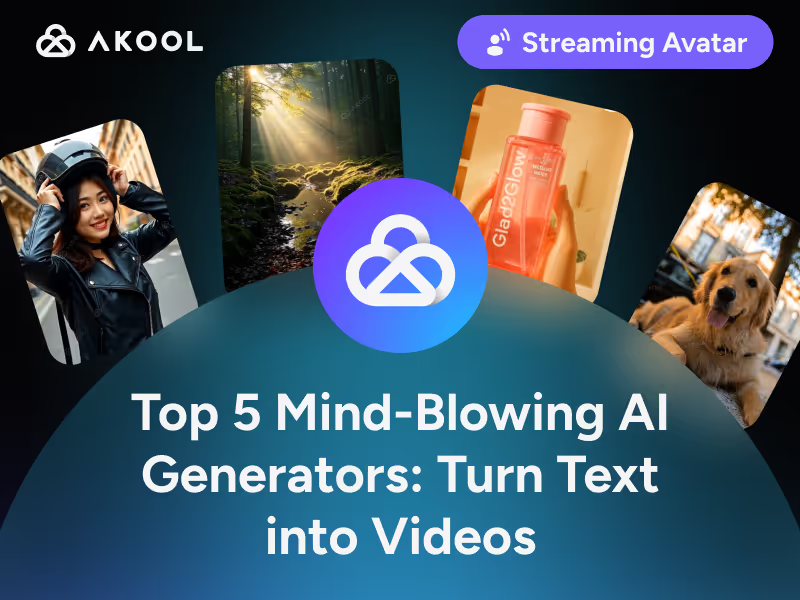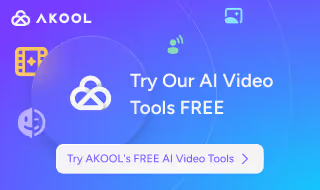AI text to video generators with streaming avatar capabilities are changing the video content landscape. These platforms allow creators to scale production using digital presenters – lifelike AI avatars that deliver scripts on camera. Instead of expensive film shoots, teams can now go from text to polished video with a Streaming Avatar in minutes. This makes it possible to communicate at scale with a human touch, meeting the huge demand for video (now over 80% of online traffic) while keeping production fast and cost-effective.
1. HeyGen — Business AI Text to Video Generator with Streaming Avatar Options
HeyGen (formerly Movio) is an AI text to video generator with streaming avatar features geared toward business users. It lets you simply input a script and choose an AI presenter, then generates a video of a virtual spokesperson delivering your message. HeyGen’s streaming avatar function effectively provides a digital presenter on demand, and even supports multi-scene videos for more dynamic content.
Key Features:
- Realistic 2D Avatars: Offers a library of professional-looking avatars (diverse genders and ethnicities) that appear as real people. Avatars speak with natural facial movements and lip-sync, though ultra-subtle expressions are a bit limited compared to high-end systems.
- Script to Speech Integration: Built-in text-to-speech with 300+ voice options across 40+ languages. You simply type or paste your script, and the avatar will voice it. HeyGen even supports custom voice cloning – you can upload a short recording to create a unique AI voice that sounds like you or your brand.
- Multilingual Output: Strong support for global content creation. You can generate videos in major languages (English, Spanish, Chinese, and dozens more) with native-sounding voices. This makes it easy to localize marketing or training videos for different regions.
Use Cases: HeyGen is popular for marketing, sales, and internal communications. For example, a marketer can rapidly produce a product demo or promo video with a friendly digital presenter explaining features. It’s also used for quick how-to videos, HR announcements, and e-learning snippets – essentially anywhere you want a human face on content without scheduling a video shoot. Small businesses love using HeyGen to put a spokesperson avatar in front of their message, making videos more engaging and personal.
Limitations: The free version of HeyGen is quite limited – exports carry a watermark and video length is restricted. To get full HD output and longer durations, a paid plan is needed. Also, while the avatars look realistic, they don’t capture very fine facial expressions or emotions, so highly emotional scripts may feel a bit flat. There’s a decent selection of stock presenters, but not as many as some competitors. Finally, advanced editing (beyond the provided templates and scenes) may require exporting the video to other software. Overall, HeyGen is fast and easy, but you’ll need to upgrade for pro use and work within its avatar style limitations.
2. Akool — Real-Time Streaming Avatar Platform for Enterprise AI Videos
Akool is an all-in-one AI text to video generator known for its real-time streaming avatar capabilities. It stands out by letting you drive a digital avatar live – effectively a virtual presenter you can control in meetings or broadcasts. Alongside standard script-to-video generation, Akool’s streaming avatar function enables instant, conversational video content, bridging the gap between pre-recorded videos and live interaction.

Key Features:
- Real-Time 3D Avatars: Akool provides highly lifelike 3D avatars with rich gestures and expressions. Uniquely, you can stream these avatars in real time as your digital twin. For example, via Akool Live Camera you can integrate an avatar into Zoom or live streams, so an AI presenter can represent you in real-time events. This streaming avatar tech makes the avatar respond instantly, allowing interactive webinars or live customer service with a human-like face.
- Multilingual & Localization: Built-in translation and multi-language support. You can generate videos (or live presentations) in dozens of languages on the fly. Akool can take one script and automatically create versions in multiple languages within minutes, which is ideal for global marketing. The avatars can also switch languages seamlessly, effectively becoming a multilingual digital presenter.
- Voice Cloning & Custom Voices: Advanced text-to-speech with voice cloning capabilities. You can clone your own voice or a specific voice for your brand, and have the avatar speak with that voice. This means the AI presenter can sound just like you or any chosen personality, adding a personal touch and consistency to videos.
Use Cases: Akool is extremely versatile, used from enterprise down to individual creators. Companies use it for corporate training videos, marketing content, and personalized sales outreach (e.g. an avatar pitching a product with the salesperson’s cloned voice). It’s popular for making multilingual how-to videos and customer support tutorials at scale. Educators and content creators have even built digital teachers and course instructors using Akool, allowing lessons to be delivered by an avatar that looks and sounds like the teacher. Because of the real-time streaming, Akool is also a game-changer for live events – imagine a CEO’s avatar presenting in multiple languages during a webcast, or an AI digital presenter hosting a live Q&A session.
3. Synthesia — Popular AI Text-to-Video Studio with Streaming Avatars
Synthesia is one of the most popular platforms for turning text into video with streaming avatar presenters. Renowned as an industry-standard ai text to video generator, Synthesia enables anyone to create a professional video by typing a script and choosing a lifelike digital presenter. Its streaming avatar capabilities shine in polished business and educational videos, though content is pre-rendered rather than live.
Key Features:
- Extensive Avatar Library: Synthesia offers 140+ diverse AI avatars (digital actors) to serve as your presenter. These are high-quality 2D video avatars of real actors, spanning different ethnicities, ages, and professional looks. You can select an avatar that fits your audience or brand, making the video feel more tailored. All avatars are very realistic in appearance and speech, ideal for marketing or training content.
- Text-to-Speech in 120+ Languages: A powerful TTS engine supports over 120 languages and accents, so you can generate videos for global audiences. Simply write the script in any supported language (or use built-in translation) and the avatar will speak it with accurate lip-sync and natural voice. The pronunciation and tone are refined for a professional sound, enabling truly multilingual video production.
- High-Quality Templates & Scenes: Synthesia ensures studio-quality output with its templates and editing tools. You can choose from various video templates (for corporate training, how-to explainer, news update, etc.) to structure your content. It also allows multiple scenes/slides in one video, and even features like an integrated screen recorder to combine avatar narration with screen content. The result is a clean, branded video with consistent formatting.
Use Cases: Synthesia is widely used for corporate training modules, instructional videos, and marketing explainers. For instance, a company can produce an onboarding series with an avatar instructor, or a software firm can create feature demo videos in multiple languages without hiring actors. Digital presenters on Synthesia can also deliver educational course content, freeing instructors from being on camera. Essentially, any scenario requiring lots of video in a polished format – e-learning, how-to guides, product marketing – is a sweet spot for Synthesia. It’s the go-to solution in 2025 for quickly making pre-recorded videos with a consistent, high-quality talking avatar.
Limitations: Synthesia’s polish comes at a price – literally. There is no fully free tier (beyond a one-time tiny demo video); you must subscribe to create substantial content. The starter plans can be relatively expensive if you only need occasional videos, which might deter casual users. Additionally, you are mostly limited to Synthesia’s own voices and avatars, unless you invest in custom offerings – voice cloning or custom avatars are only for enterprise-level customers. While you can customize backgrounds and add your branding, the creative freedom is somewhat constrained to ensure simplicity (for example, you can’t deeply customize avatar actions or camera angles). Also, Synthesia doesn’t support actual live streaming avatar interaction – it focuses on generated videos, not real-time – which tools like Akool provide. In summary, Synthesia is superb for standard business videos, but less ideal for those wanting more free-form or live interactive content.
4. D-ID — Creative Studio for Personalized Streaming Avatars
D-ID is an AI video generator known for personalized avatars – it can turn any photo into a streaming avatar video. Unlike others that rely on a fixed library of actors, D-ID allows you to upload an image (even a selfie) and animate it to speak your script. This flexible ai text to video generator + streaming avatar platform lets you create a unique digital presenter from scratch, which is great for users who want more control over their avatar’s identity.
Key Features:
- Photo-to-Video Animation: D-ID’s signature feature is the ability to animate a single image into a talking video. You can upload a photo of a face – whether it’s your own face, a historical figure, or even a drawing – and the AI will bring it to life with realistic lip-sync and basic facial expressions. This means you have virtually unlimited avatar choices beyond the ~25 stock avatars D-ID provides. In minutes, you can have a custom digital presenter speaking your text, which is incredibly novel for personalized messages or creative projects.
- Multi-Scene Video Editor: D-ID supports creating longer videos by stringing together scenes. You can have up to 10 scenes per project, with a total video length up to 30 minutes. Each scene can feature a different avatar (photo or stock), background, and script segment. This multi-scene capability allows for more story-like or instructional videos (e.g. an intro with an avatar, a middle section with graphics or another character, and a conclusion with the avatar again). It’s all done in an easy timeline editor, making complex videos possible without external editing software.
- Multi-Language Voices & Translation: Like others, D-ID integrates text-to-speech voices in a wide range of languages and accents. You can type your script in various languages and get a natural voiceover for your avatar. Through partnerships with TTS providers, it covers major languages (English, Spanish, Mandarin, etc.) and many regional accents. D-ID also offers an API-based video translate feature, which can take an existing video and automatically generate a version in another language (swapping in a new voice and translated subtitles). This is useful for quickly localizing content for different audiences.
Use Cases: D-ID is a great choice when you want a custom or personalized streaming avatar in your video. Many educators and trainers use it to animate their own photo or an instructor’s photo, so that the training video has a familiar face without that person needing to be filmed. Marketers have used D-ID to bring characters or even historical figures to life – for example, animating a painting or a mascot to create a fun promo. It’s also popular for greeting videos or social media content; you could send a friend a birthday video where your photo sings to them, or make a viral clip of a famous portrait delivering a modern message. Essentially, whenever the default avatars of other platforms don’t fit your vision, D-ID lets you create an AI presenter of your choice.
Limitations: Because D-ID is more open-ended, it might take some trial and error to get the best results. Not every photo will animate perfectly – you need a clear, front-facing image for optimal realism. The avatars it generates are impressive, but you may notice occasional quirks (e.g. slightly stiff expressions or less emotion for very dramatic scripts). The level of realism, while good, can sometimes fall short of a true video of a human, especially in conveying subtle emotions. D-ID’s interface is user-friendly, but mastering scene composition or tuning an avatar’s look (choosing the right photo, voice style, etc.) may require a bit of learning. Lastly, while it does have a free trial, longer videos and some advanced features require credits or subscriptions. The free tier might restrict video length or add a watermark (currently, free trials allow only a few minutes of video). In summary, D-ID offers unmatched avatar flexibility, but you’ll need to experiment and possibly do some fine-tuning to achieve the most natural results.
5. AI Studios — Enterprise AI Video Maker with Streaming Avatar Features
AI Studios by DeepBrain AI is a professional AI text to video generator that excels in corporate and educational use, with robust streaming avatar features. It provides a large selection of hyper-realistic AI avatars and supports interactive presentations. AI Studios makes it easy to convert scripts into polished videos with digital presenters, eliminating the need for filming human actors.
Key Features:
- Hundreds of Lifelike Avatars: AI Studios offers a vast library of digital presenters, including 150+ realistic avatars (and growing). Users can choose from a diverse range of virtual actors – varying in ethnicity, age, attire, and style – to find the perfect on-screen persona for their content. You can even create a custom avatar using a short sample video of a person, allowing your own likeness or a company spokesperson to become the AI presenter.
- Text-to-Video with Multi-Language Support: The platform supports text-to-speech in over 110+ languages and dialects. Simply input your script and select a voice (from an array of natural-sounding AI voices), and the avatar will deliver it with accurate lip-sync. AI Studios also has an instant translation feature – you can generate one video and then automatically translate and dub it into dozens of languages, much like Colossyan’s one-click translation. This makes scaling content for global audiences incredibly efficient.
- Interactive & Conversational Avatars: A standout feature is the support for conversational AI avatars. AI Studios can deploy avatars powered by large language models (LLMs) that can engage in real-time Q&A or interactive dialogue (for example, an AI avatar that acts as a virtual customer service agent or tutor). This blurs the line between traditional video and interactive chatbot – you can have an avatar on a website or kiosk that responds to user input, effectively a streaming digital ambassador for your brand.
Use Cases: AI Studios is tailored for businesses, educators, and large organizations that need to produce video content at scale. Common use cases include corporate training and e-learning videos – e.g. an HR department can quickly create a series of compliance training modules with an avatar instructor, in multiple languages, without filming anyone. Marketing teams use it for product demos and global campaigns (making one video and auto-generating localized versions for each region).
Limitations: AI Studios is a premium product, and while it has a free plan, the free usage is capped (up to 3 short videos per month, 3 minutes each with a limited avatar selection). Also, because it’s focused on business and training content, it may not have as many flashy creative effects or avatar "personalities" as some consumer-oriented apps – the avatars tend to be formal and the style is somewhat conservative (which suits corporate use). Finally, real-time streaming avatar interaction (conversational mode) might require stable internet and is still an evolving feature, so it’s best used in controlled environments.
Conclusion:
AI text to video generators with streaming avatar capabilities are making video production more scalable and engaging than ever. By leveraging digital presenters, even small teams can create a human connection in videos without hiring actors or studios. From HeyGen and Synthesia’s easy script-to-video workflows to D-ID’s personalized avatars and AI Studios’ enterprise integrations, these tools cover a wide range of needs. Each has limitations, but all demonstrate the power of combining text-to-speech, visual avatars, and automation to deliver content at scale.
Among them, Akool stands out with its real-time streaming avatar technology and flexible all-in-one platform – and with a FREE trial available, it’s easy to experiment with deploying your own lifelike digital presenter. Try Akool Free Trial now!







.avif)
.avif)